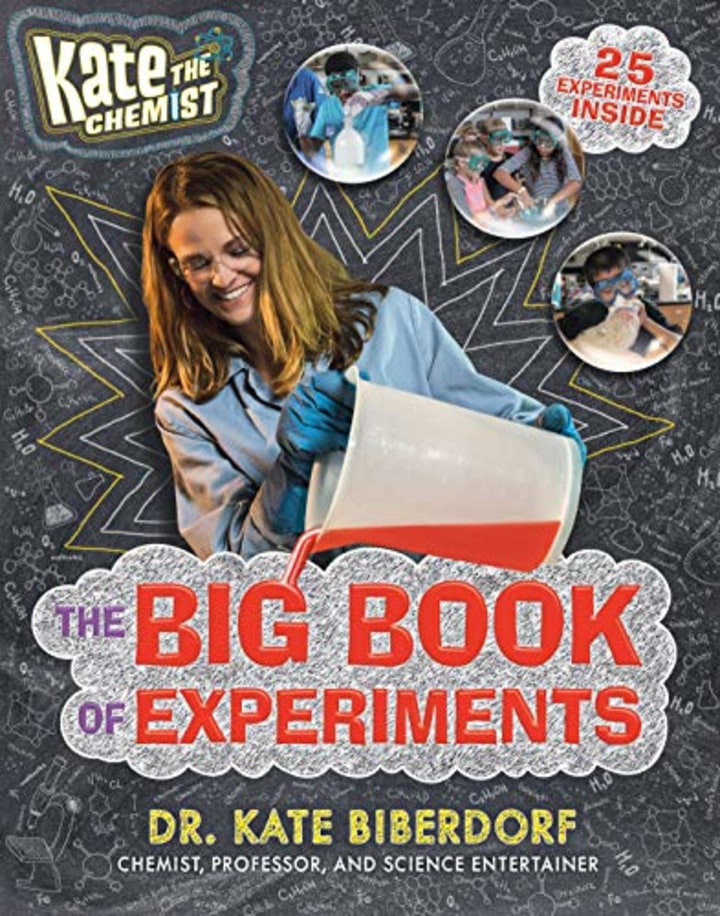My name is Dr. Kate Biberdorf, but most people call me Kate the Chemist, and I am so excited to share some easy science experiments you can do with kids at home.
For years, I’ve been bombarded with requests for fun science experiments kids can do at home, so I embarked on a mission to compile my favorite science experiments into "Kate the Chemist: The Big Book of Experiments."
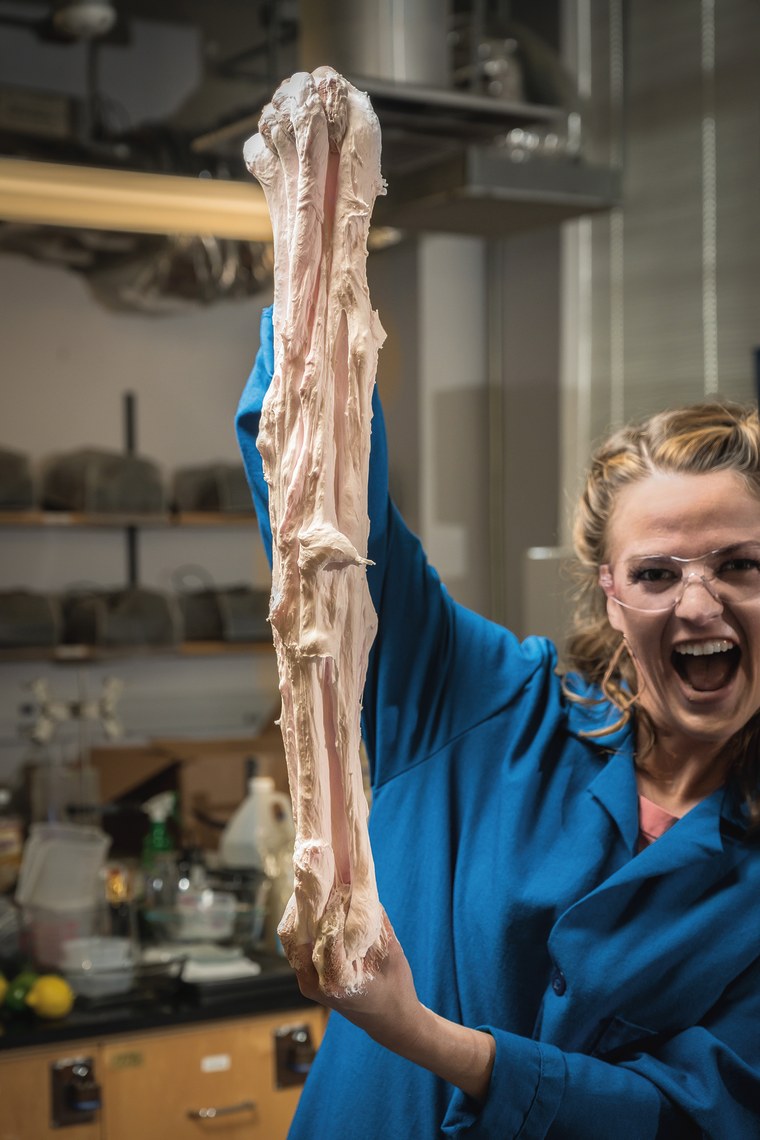
I know how many kids and parents are home right now because of coronavirus, and I hope you’ll have a ton of fun doing the experiments in the book and learning how the science works. My chapter book, "Dragons vs. Unicorns," is also out now, and perfect as a read-aloud or for independent reading time.
If you want more from me, check out my Instagram – I’m posting videos every day with experiments and answers to your questions about science!
Experiment 1: Puffy Slime
Puffy Slime is soooooo soft. I make this slime whenever I’m worried about something. The cloudlike texture is somehow very calming.
Messiness level: 3/3
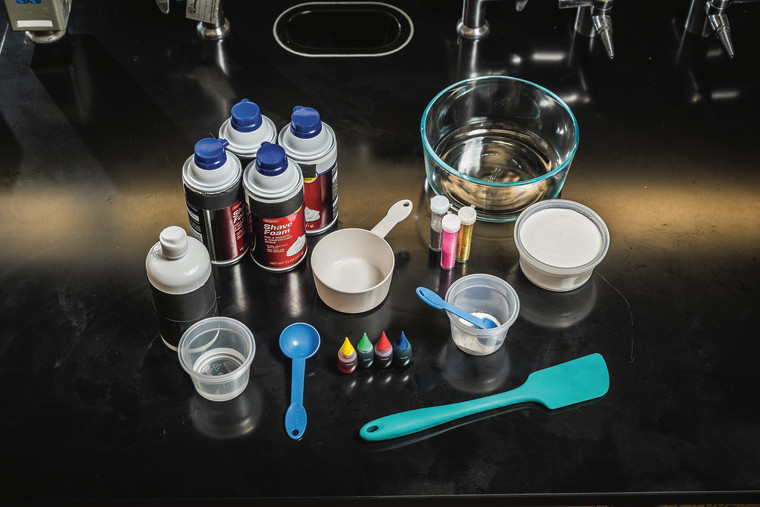
Materials:
- 1 cup high-quality craft glue
- 3 heaping cups shaving cream
- 1 teaspoon baking soda
- 2 tablespoons saline solution
- 1 teaspoon (or more) food coloring
- 1 teaspoon (or more) glitter
- 1 medium bowl
- 1 spatula
Protocol:
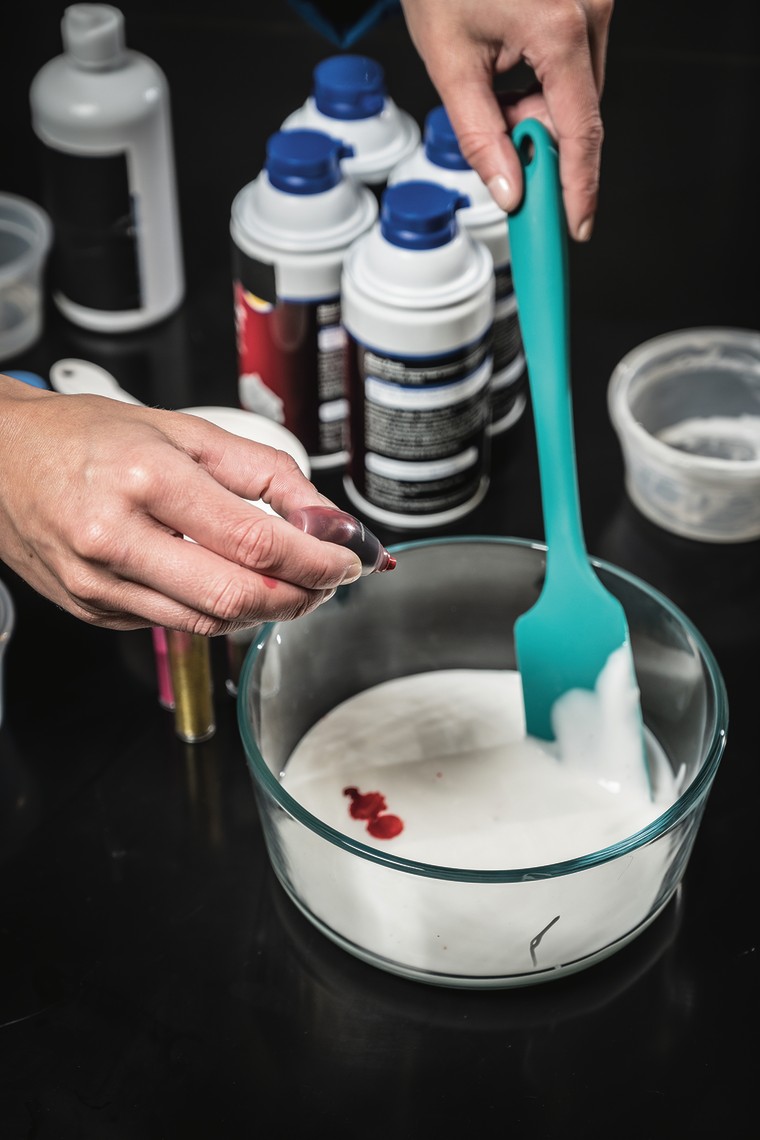
- 1. Pour glue into a medium bowl.
- 2. Add 1 teaspoon (or more) of food coloring to the glue.
- 3. Add 1 – 3 teaspoons of glitter to the glue.
- 4. Stir the glue until it’s all mixed together.
- 5. Add baking soda to the mixture in the medium bowl.
- 6. Add saline solution to the medium bowl.
- 7. Add shaving cream to the medium bowl.
- 8. Stir the glue mixture for at least 60 seconds.
- 9. Allow the slime to sit for at least 3 minutes.
- 10. Play with the Puffy Slime!
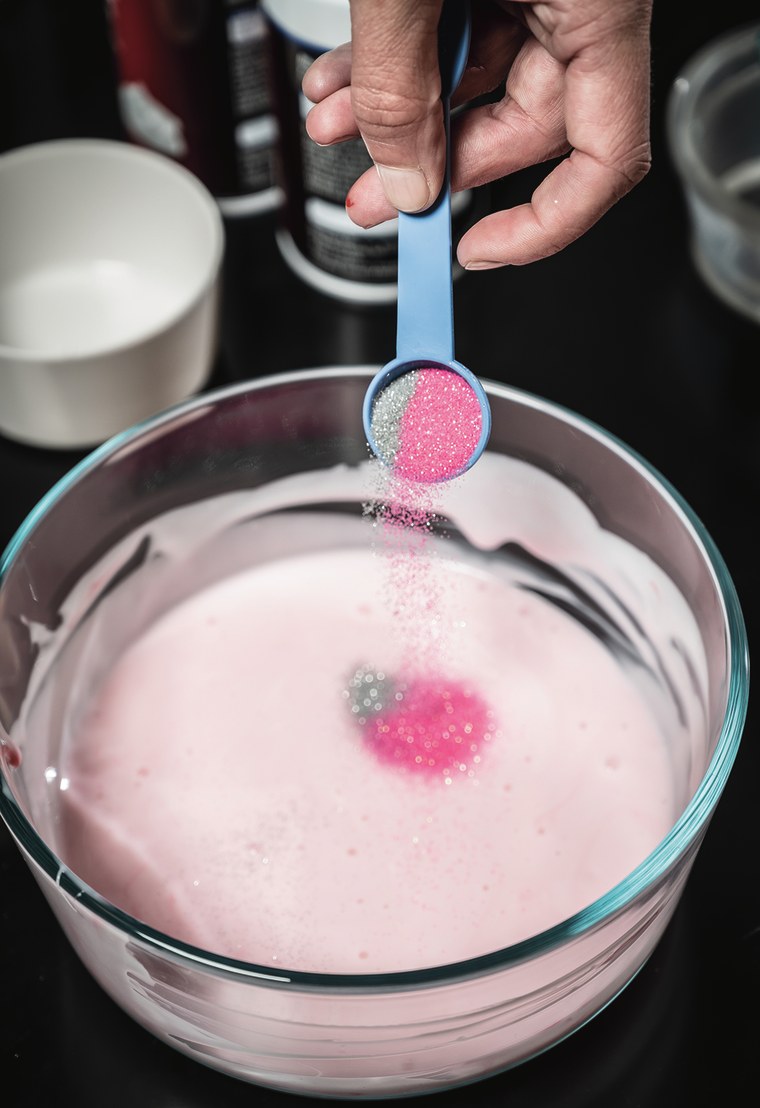
Pro Tip: Add a few drops of saline solution to your hands to minimize the stickiness.
How it works:
Shaving cream contains a number of ingredients, but it is mostly water. When the button on the top of an aerosol can is pushed, air (which is gas) is squeezed into the liquid and a soft foam comes out of the bottle. A similar process happens when we blow bubbles in a glass of water. When the shaving cream is added to the glue, the trapped air bubbles give the slime its fluffy texture! The more shaving cream you add, the bigger and fluffier the slime will be.
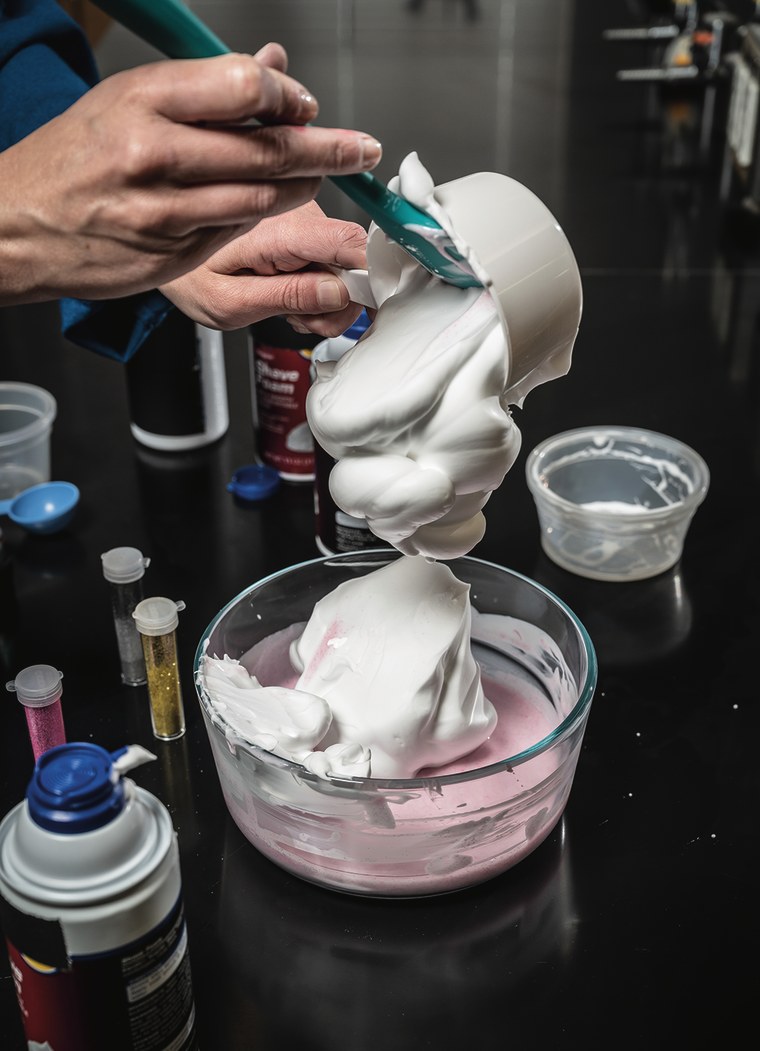
We have to use saline solution for this experiment because we need boric acid and sodium borate to help us make a cross-linked polymer (a big molecule made of much smaller molecules). The boron reacts with the polyvinyl acetate in the glue mixture to make our slime flexible. How far can you stretch your polymer?
What do you think?
- Did the slime absorb all of the saline solution? Why or why not?
- Can you make popping noises with your slime? If so, what does that sound represent?
- Why does coating your hands with the saline solution minimize the stickiness?
- What will happen if you double the amount of shaving cream added to the mixture?
- Will the experiment work without adding baking soda?
Experiment 2: Raincoat
I love rockhopper penguins. They are the cutest, most adorable animals in the entire world, and I created this experiment to try to show how their feathers keep their bodies warm and dry!
Messiness level: 2/3
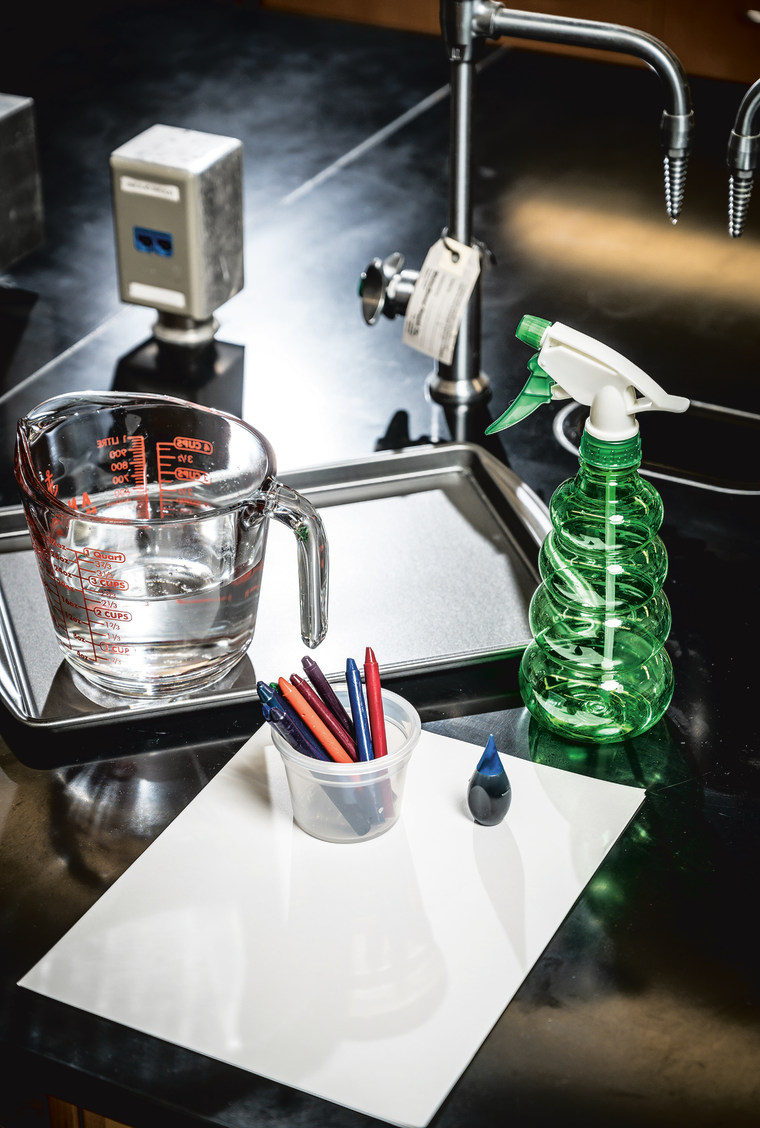
Materials:
- 1 piece of paper
- 1 box of crayons
- 1 squirt bottle
- 1 – 2 cups water, to fill the squirt bottle
- 2 – 3 drops blue food coloring
- 1 baking sheet
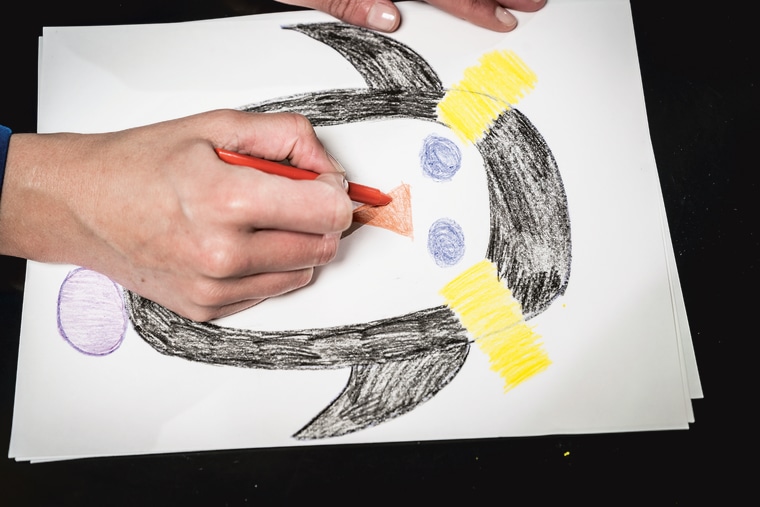
Protocol:
- 1. Using the crayons, draw your favorite feathered friend. My favorite is the rockhopper penguin!
- 2. Make sure every part of your animal has a layer of crayon, but leave the background completely empty.
- 3. Fill the squirt bottle with water.
- 4. Add 2 – 3 drops of food coloring to the water.
- 5. Cap the squirt bottle and gentle swirl it to form a blue solution.
- 6. Place your drawing on a baking sheet.
- 7. Use the squirt bottle to cover the entire paper with water.
- 8. Look at the paper to see how the crayon feathers repel the water, and how they keep your feathered friend dry!
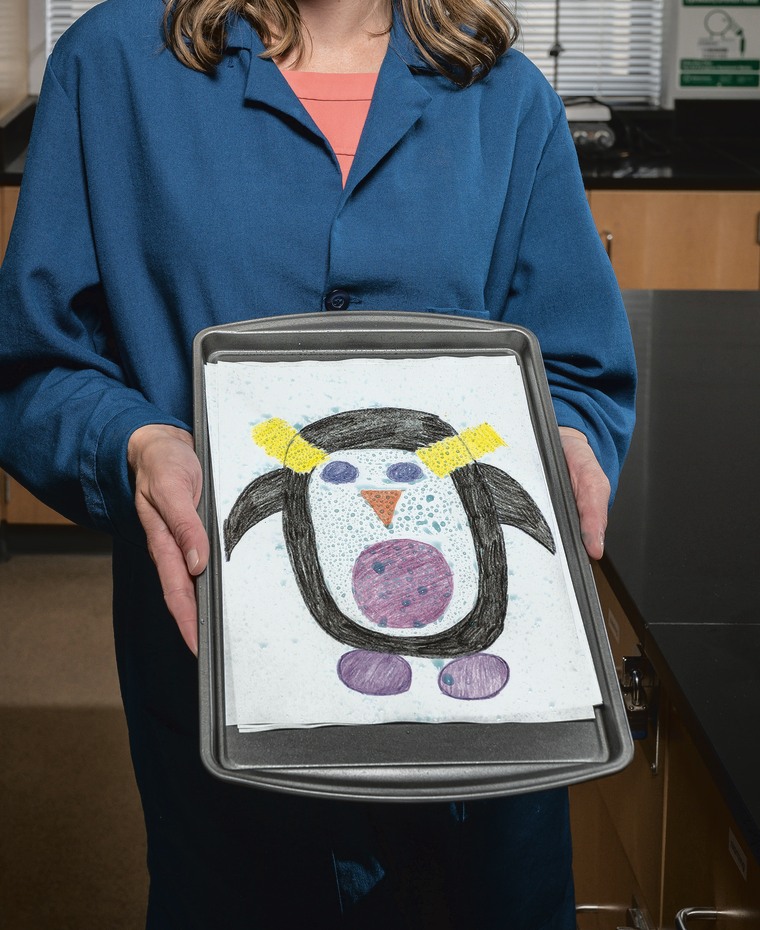
How it works:
Many feathered animals, like ducks and penguins, have a gland that forms a special oil that helps keep their bodies dry. The bird will find creative ways to roll around in this oil until all of its feathers are completely drenched. The oil has a very important physical property: it is a nonpolar molecule. This means that all of the electrons (negatively charged particles) are evenly distributed across the molecule. A nonpolar molecule does not want to be anywhere near a polar molecule (such as water). In fact, the oil provides a protective layer over the feathers, repelling any rain of water that hits the bird.
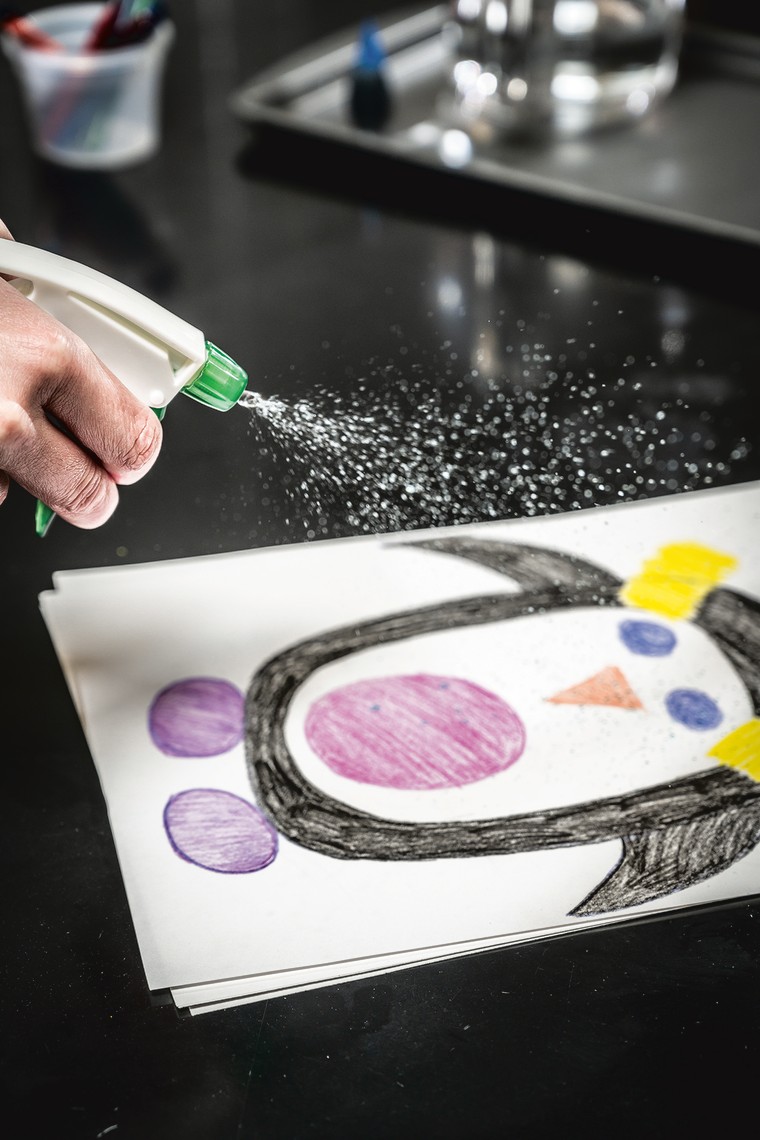
We can use crayons to replicate the nonpolar / polar interactions between oil and water. Crayons are composed of wax, which is a nonpolar system with strong dispersion force. When we covered our birds with the crayons, we added a protective layer of wax to the paper. The nonpolar properties of wax repel the polar properties of water, just as feathers repel water or a raincoat shields us from rain. Have you ever noticed how water beads up on your raincoat? We tend to shake the water off our raincoat in the same way that birds shake the water off of their feathers. Neat, huh?
What do you think?
- What does the crayon wax represent in this experiment?
- How do feathers repel the water?
- What will happen is you use markers instead of crayons? Will the experiment still work?
- What will happen if you melt the crayons and use paintbrushes to apply the wax to the drawing?
